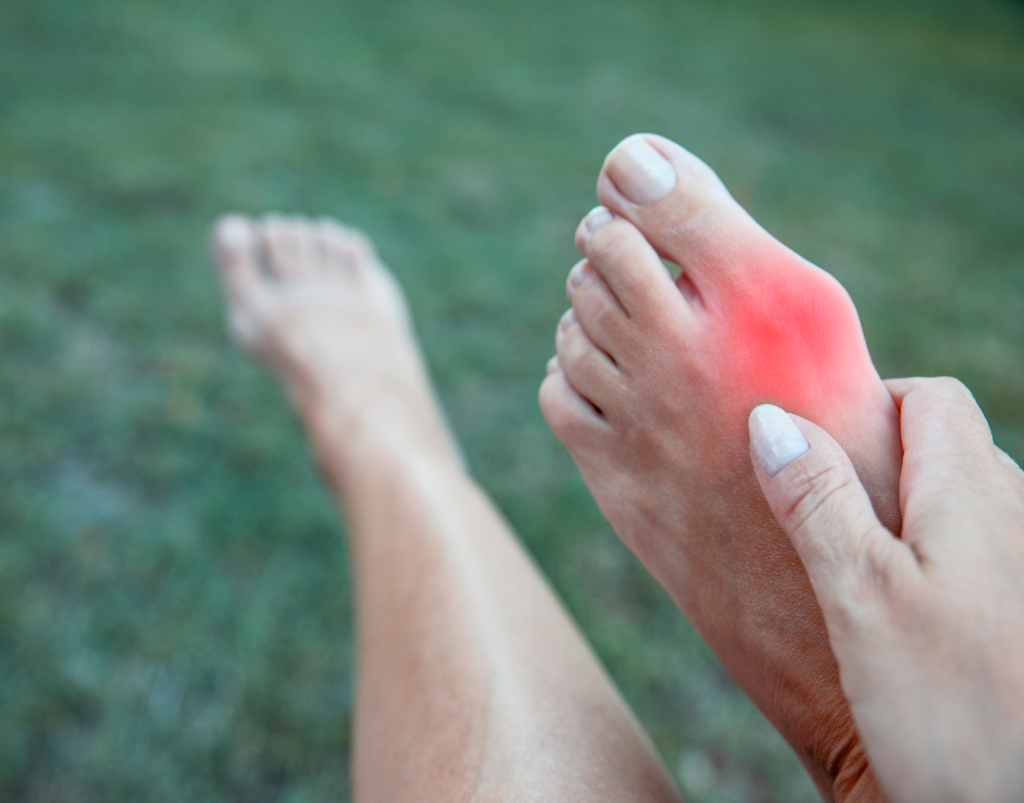
30 Sep Big Toe Pain: Five Things That Are Making Your Bunion Worse
 Could you be making your bunion worse without even knowing it? Bunions are a very real concern for many of our patients here at Masterton Foot Clinic. Many of our patients struggle with having bunion pain that radiates around the big toe joint, or makes it difficult to fit shoes comfortably at the forefoot.
Could you be making your bunion worse without even knowing it? Bunions are a very real concern for many of our patients here at Masterton Foot Clinic. Many of our patients struggle with having bunion pain that radiates around the big toe joint, or makes it difficult to fit shoes comfortably at the forefoot.
Among the discomfort and frustrations of bunions, some people presume that they were destined to develop bunions sooner or later because their parents had them and “passed them down”. While it’s true that genetic traits can play a big role in your likelihood to have foot characteristics that may make you more susceptible to having bunions, the development of a bunion isn’t set in stone. In fact, the things you do can have a direct influence on when you develop a bunion and how quickly it worsens.
So what are some things you may be inadvertently doing that could be accelerating how quickly your bunion progresses and worsens? Here are five tips from our trusted podiatry team.
1. High Heeled Shoes
It’s no surprise that the first few things on our list of bunion-worsening habits are centered around footwear. Specifically, high-heeled shoes significantly load your forefoot and place additional pressure on your big toe joint. If we rewind a little and look at just how and why bunions develop in the first place, foot structure and biomechanics often play a role. This is where, for example, having a flatter (pronated) foot type will mean that your foot rolls downwards and spends more time on the inside border of the foot with every step, driving the big toe down on the ground with more force, and encouraging the development of a bunion. Pair this with high heels that shift your bodyweight further onto your forefoot (it’s already a big ask when it’s distributed evenly over both feet!), and the progression of your bunion can be accelerated.
2. Shoes With A Narrow Toe Box
Narrow toe boxes are placed in shoes for a variety of reasons – and almost always they’re related to fashion, style or ‘office chic’ appearances – for both men and women. Unfortunately, narrow toe boxes can place direct pressure on the outside of the big toe joint to accelerate the development of the bunion. As the bunion grows, even less space is available in the shoe for the forefoot, creating a vicious cycle.
We highly recommend placing roomy toe boxes as a priority for your closed-in shoes, and avoiding strappy sandals that have a strap directly over the bunion, unless the strap is adjustable and can better accommodate the width of your forefoot. You’ll also likely be saving yourself considerable pain – when shoes rub against the side of a bunion, it is a quick road to the development of calluses or painful corns.
3. Leaving Your Arches Unsupported
In our first tip we described how bunions are often related to your foot structure and biomechanics. Well, leaving your feet and arches unsupported allows them to continue to roll down and overload the big toe, whereas supporting your arches through good shoes or foot orthotics will help reduce the load on the big toe and comparatively decelerate bunion progression.
Keeping your feet and arches supported (when done right) also goes a long way in helping to prevent a range of foot and leg pains and injuries, while keeping you generally more comfortable when walking or standing.
4. Leaving Corns & Calluses On Bunions Unmanaged
Corns and calluses both arise in response to excess friction or rubbing, which is why they often occur on the side of the big toe or beneath the big toe, through the same process that contributes to bunion development and progression. When corns are left untreated, they can continue to cause pain and discomfort. Untreated calluses can continue to grow thicker. At first there may be no notable symptoms aside from the presence of the callus, but as the calluses grow bigger, they can start adding even more pressure to the big toe joint with every step, as well as decreasing the room available in the toe box of a shoe. This may help accelerate the progression of the bunion.
5. Having Unresolved Inflammation
Inflammation in the feet is often a sign of an underlying injury or condition. It may be from an injury to the big toe, as the result of rheumatoid arthritis or gout, or something else. When inflammation persists, over time it can be damaging to the integrity and stability of a joint. This can make the joint more susceptible to damage and changes, including to the accelerated progression of a bunion.
So, What Makes A Bunion Better?
The simple answer is working with a podiatrist who has an intricate understanding of bunions and their causes. This is a big part of what our podiatrists do here at Masterton Foot Clinic, and we dive deep to understand what is causing your bunion to progress and worsen. We then create a tailored treatment plan for you to help reduce your bunion pain, improve your comfort on your feet, and slow the progression of your bunion.
Learn more about bunions and find out which ‘stage’ your bunion is at here. To book an appointment with our experienced podiatrists, call us on 06 370 4057 or book online here.


